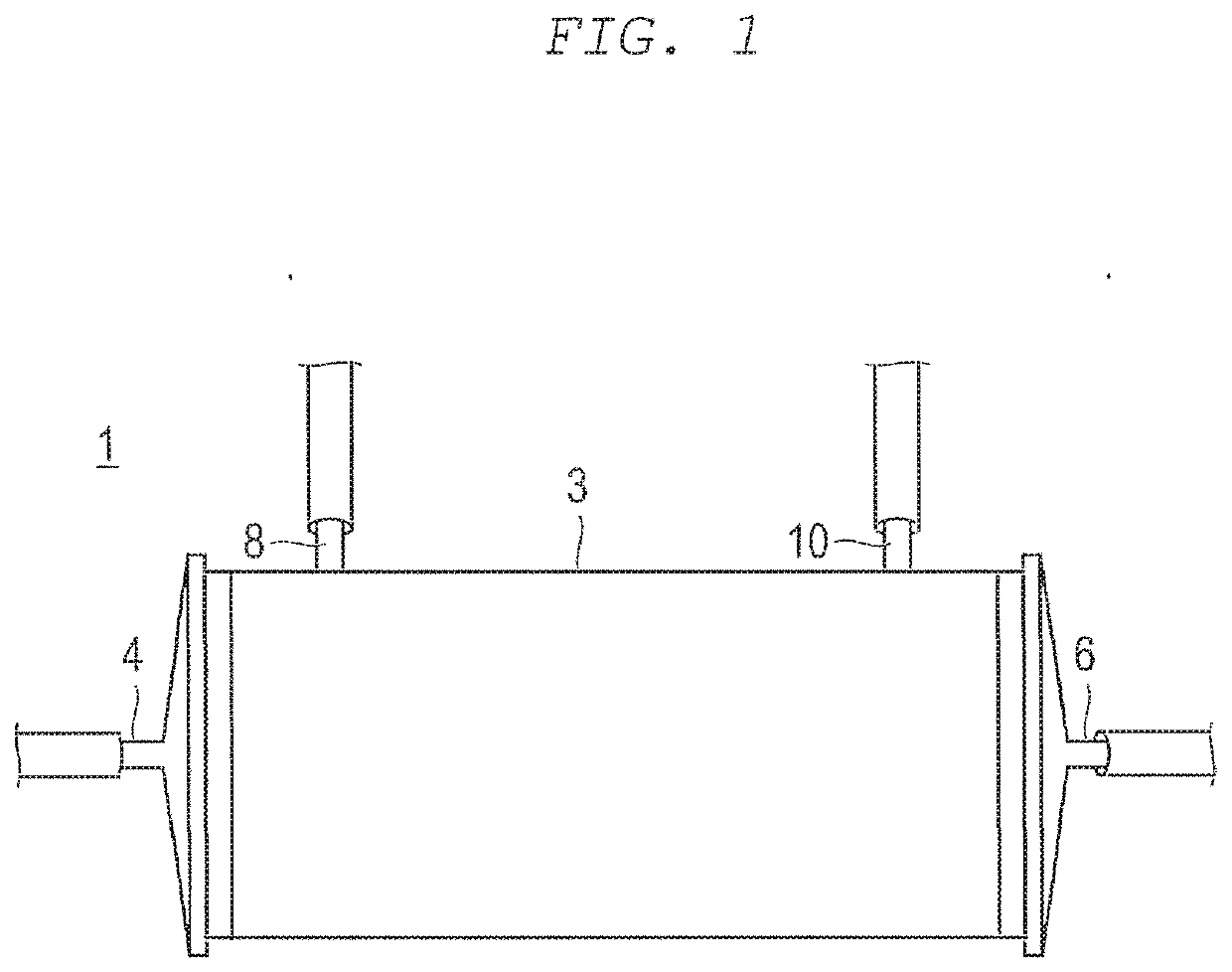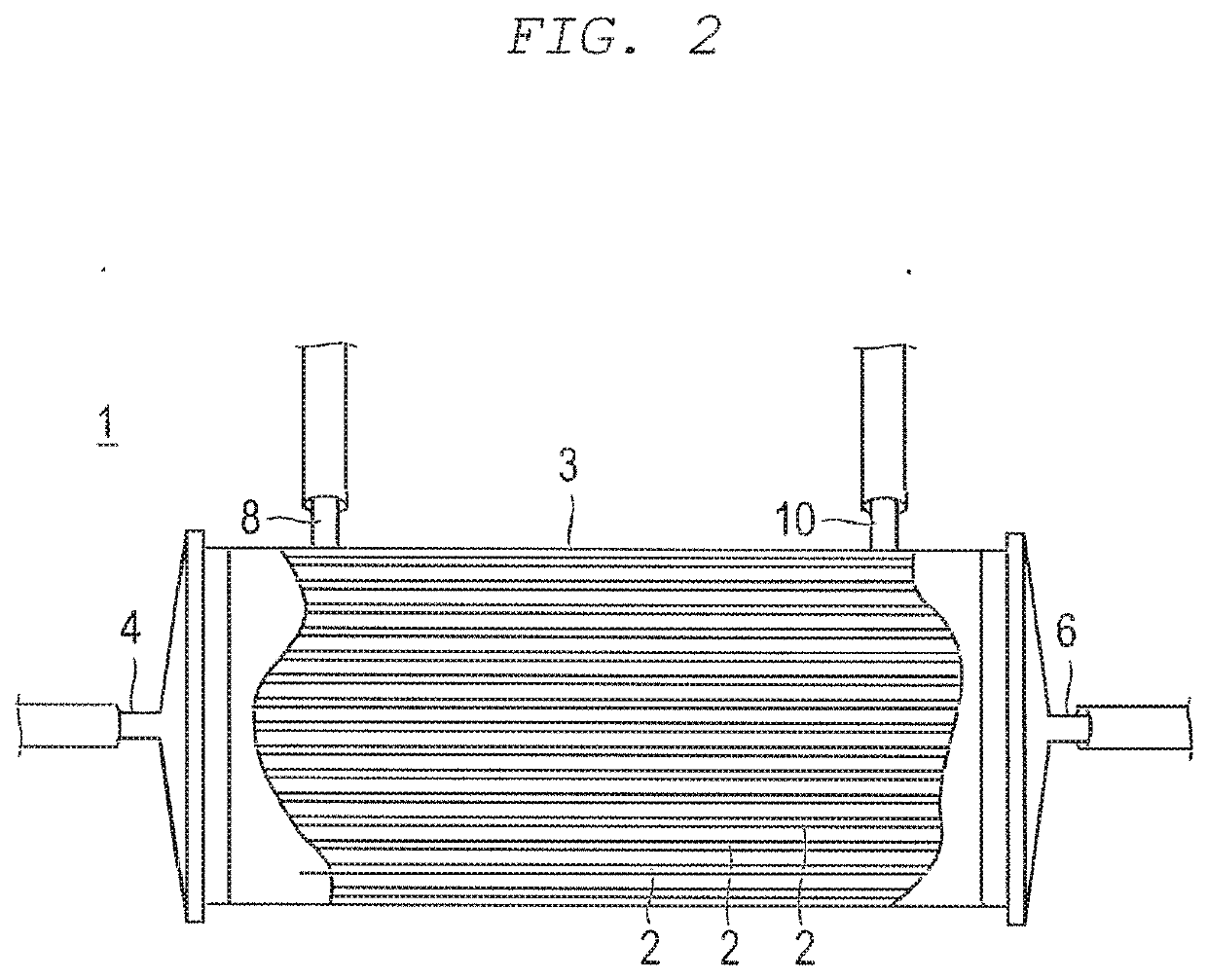Cell culture substrate having two acrylate structural units
a technology of acrylate and substrate, applied in the field of cell culture substrate, can solve the problem that both characteristics cannot be satisfied, and achieve the effect of excellent coating operability
- Summary
- Abstract
- Description
- Claims
- Application Information
AI Technical Summary
Benefits of technology
Problems solved by technology
Method used
Image
Examples
production example 1
Synthesis of Copolymer (1)
[0079]To a 20-ml glass pressure-proof test tube, 0.9 g (0.0058 mol) of tetrahydrofurfuryl acrylate (THFA), 1.1 g (0.0085 mol) of methoxyethyl acrylate (MEA), and 3 g of methanol were added, and then nitrogen gas was bubbled for 10 seconds, thereby preparing a monomer solution (1). To this monomer solution (1), 0.004 g (0.013 mmol) of 2,2′-azobis(4-methoxy-2,4-dimethylvaleronitrile) as a polymerization initiator was added, and the resultant mixture was heated in a heat block set at 45° C. for 6 hours, to perform polymerization reaction, thereby obtaining obtain a polymerization liquid (1). The resultant polymerization liquid (1) was added to 50 ml of hexane, and the precipitated polymer component was recovered and dried under reduced pressure, thereby obtaining a copolymer of tetrahydrofurfuryl acrylate and methoxyethyl acrylate (THFA:MEA=40:60 (molar ratio)) (copolymer (1)). The weight average molecular weight (Mw) of this copolymer (1) was measured to be 3...
production example 2
Synthesis of Copolymer (2)
[0080]To 20-ml glass pressure-proof test tube, 1.3 g (0.0083 mol) of tetrahydrofurfuryl acrylate (THFA), 0.7 g (0.0054 mol) of methoxyethyl acrylate (MEA), and 3 g of methanol were added, and then nitrogen gas was bubbled for 10 seconds, thereby preparing a monomer solution (2). To this monomer solution (2), 0.004 g (0.013 mmol) of 2,2′-azobis(4-methoxy-2,4-dimethylvaleronitrile) as a polymerization initiator was added, and the resultant mixture was heated in a heat block set at 45° C. for 6 hours, to perform polymerization reaction, thereby obtaining obtain a polymerization liquid (2). The resultant polymerization liquid (2) was added to 50 ml of hexane, and the precipitated polymer component was recovered and dried under reduced pressure, thereby obtaining a copolymer of tetrahydrofurfuryl acrylate and methoxyethyl acrylate (THFA:MEA=60:40 (molar ratio)) (copolymer (2)). The weight average molecular weight (Mw) of this copolymer (2) was measured to be 320...
production example 3
Synthesis of Copolymer (3)
[0081]To 20-ml glass pressure-proof test tube, 1.65 g (0.0106 mol) of tetrahydrofurfuryl acrylate (THFA), 0.35 g (0.0027 mol) of methoxyethyl acrylate (MEA), and 3 g of methanol were added, and then nitrogen gas was bubbled for 10 seconds, thereby preparing a monomer solution (3). To this monomer solution (3), 0.004 g (0.013 mmol) of 2,2′-azobis(4-methoxy-2,4-dimethylvaleronitrile) as a polymerization initiator was added, and the resultant mixture was heated in a heat block set at 45° C. for 6 hours, to perform polymerization reaction, thereby obtaining obtain a polymerization liquid (3). The resultant polymerization liquid (3) was added to 50 ml of hexane, and the precipitated polymer component was recovered and dried under reduced pressure, thereby obtaining a copolymer of tetrahydrofurfuryl acrylate and methoxyethyl acrylate (THFA:MEA=80:20 (molar ratio)) (copolymer (3)). The weight average molecular weight (Mw) of this copolymer (3) was measured to be 3...
PUM
| Property | Measurement | Unit |
|---|---|---|
| temperature | aaaaa | aaaaa |
| RH | aaaaa | aaaaa |
| concentration | aaaaa | aaaaa |
Abstract
Description
Claims
Application Information
 Login to View More
Login to View More - R&D
- Intellectual Property
- Life Sciences
- Materials
- Tech Scout
- Unparalleled Data Quality
- Higher Quality Content
- 60% Fewer Hallucinations
Browse by: Latest US Patents, China's latest patents, Technical Efficacy Thesaurus, Application Domain, Technology Topic, Popular Technical Reports.
© 2025 PatSnap. All rights reserved.Legal|Privacy policy|Modern Slavery Act Transparency Statement|Sitemap|About US| Contact US: help@patsnap.com



